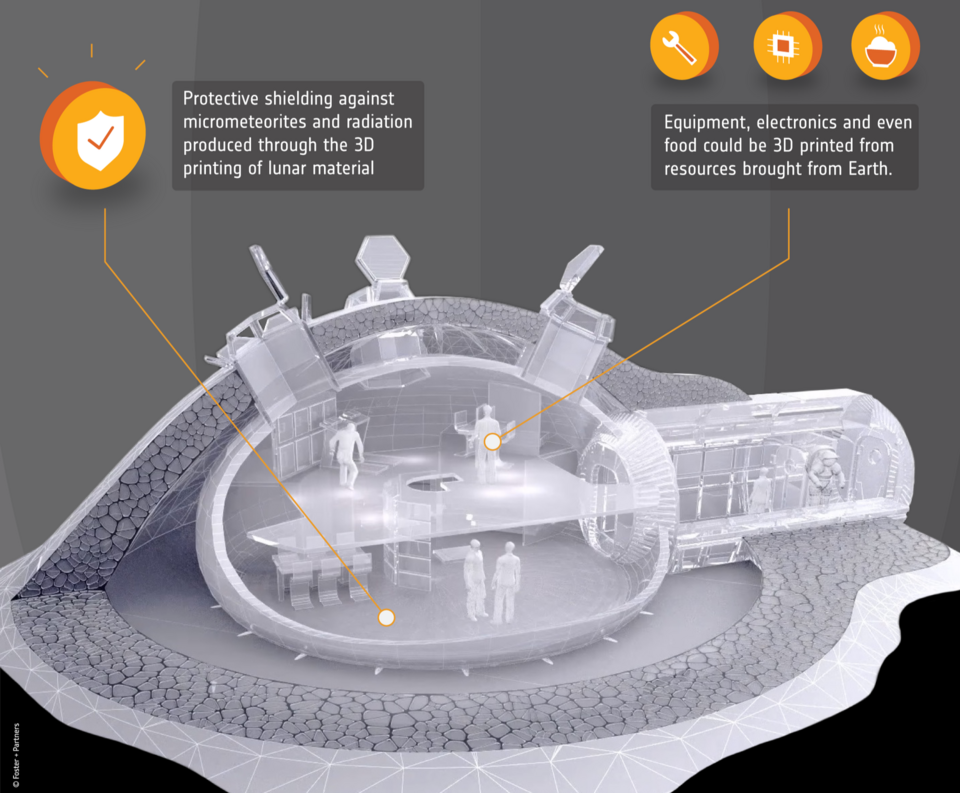Humans spent just a few days on the Moon during the Apollo program, brief visits to a world completely hostile to life. Today’s missions aim for something far more ambitious, a permanent settlement on the Moon and Mars where astronauts can live and work for months or even years. Before that vision becomes a reality, one of space exploration’s most critical challenges must be resolved, creating habitats that can protect humans from environments that are determined to kill them.
The obstacles are challenging and varied. Lunar and Martian surfaces experience extreme temperature swings, with the Moon ranging from 127°C in sunlight to minus 173°C in shadow. Both worlds lack breathable atmospheres and magnetic fields that leave their surfaces exposed to relentless cosmic radiation and solar particle bombardment. Micrometeorites rain down constantly, and on Mars, dust storms can cover the entire planet. Any habitat must shield occupants from all these hazards while maintaining Earth like pressure and breathable air inside.
 Buzz Aldrin standing on the surface of the Moon. The fine powdery dust may one day be used to create lunar habitats (Credit : NASA)
Buzz Aldrin standing on the surface of the Moon. The fine powdery dust may one day be used to create lunar habitats (Credit : NASA)
A new study traces how engineering approaches to these challenges have evolved since 1952. Early concepts focused on inflatable structures, lightweight fabric domes that could be packed compactly for transport and then expanded on arrival. These offered an wonderful solution to keep launch costs low since every kilogram sent to space comes with an enormous price. Later proposals explored rigid metallic structures, deployable trusses, and even systems using interlocking cables and bars.
The most promising new approaches combine multiple techniques. Hybrid designs pair inflatable modules, which provide living space, with rigid protective shells constructed from local materials. This approach embraces in-situ resource utilisation, building with materials found on site rather than shipping everything from Earth. On the Moon, that means using lunar regolith, the dusty soil covering the surface, to create radiation shielding walls through 3D printing or simple piling. Mars offers similar possibilities with its iron rich dust.
Three dimensional printing has emerged as a particularly interesting construction method for space. Autonomous robots could print habitat components while crews are still on their way, using materials extracted and processed from the surrounding environment. This approach dramatically reduces the mass that must be launched from Earth while providing structures specifically designed for their alien surroundings.
 One possible technology for building habitats on the Moon and Mars involves 3D printing from local resources (Credit : ESA)
One possible technology for building habitats on the Moon and Mars involves 3D printing from local resources (Credit : ESA)
The review also examines how habitat shape affects structural performance. Dome configurations distribute loads efficiently and minimise the amount of material needed for a given internal volume. The method chosen for deployment, whether inflating, unfolding, or printing, shapes what designs are practical and what can safely withstand the stresses of pressurisation and external loads.
Beyond the engineering details, the study reveals that we are methodically solving the puzzle of how to become a space fairing species. Each technical advance in habitat design brings permanent settlements on other worlds closer to reality, transforming what once seemed like pure science fiction into achievable engineering challenges with practical solutions just waiting to be built.

